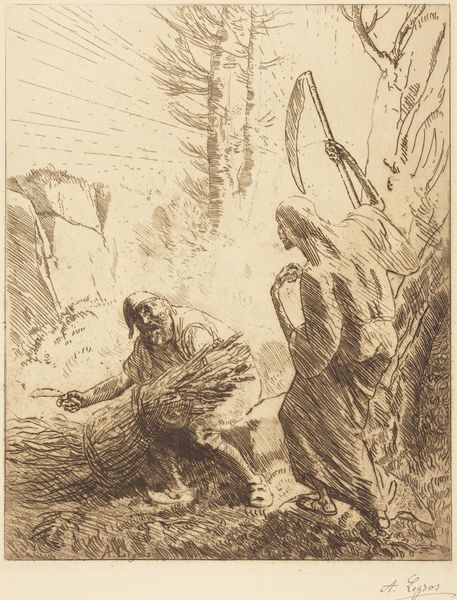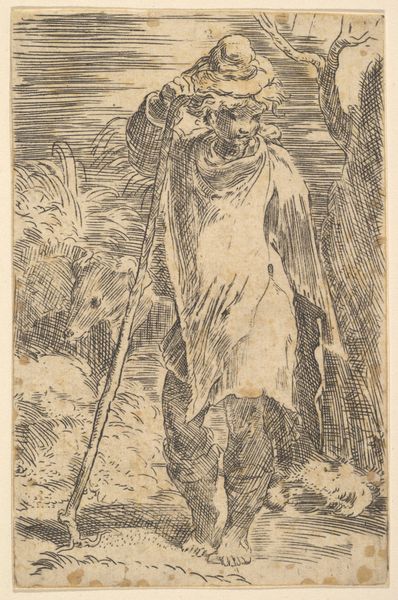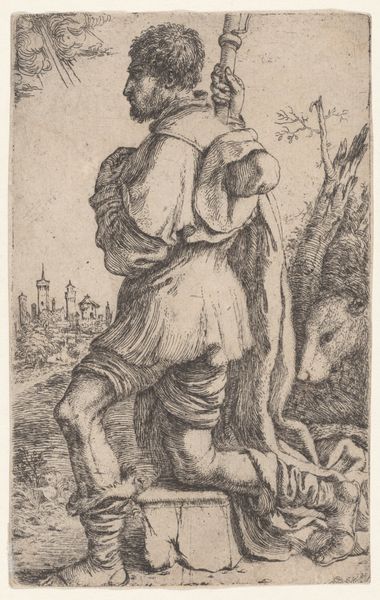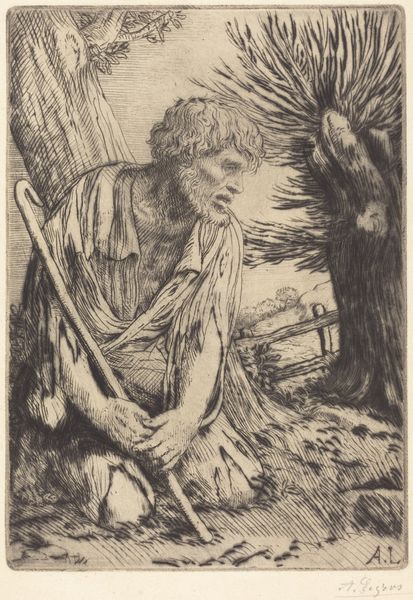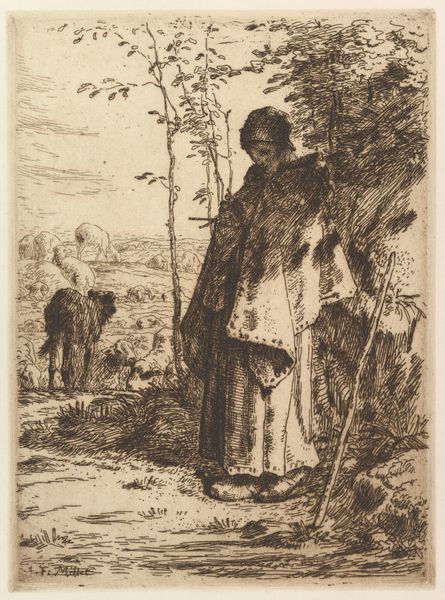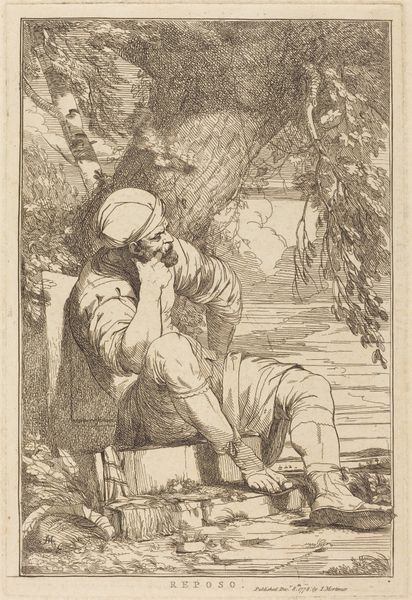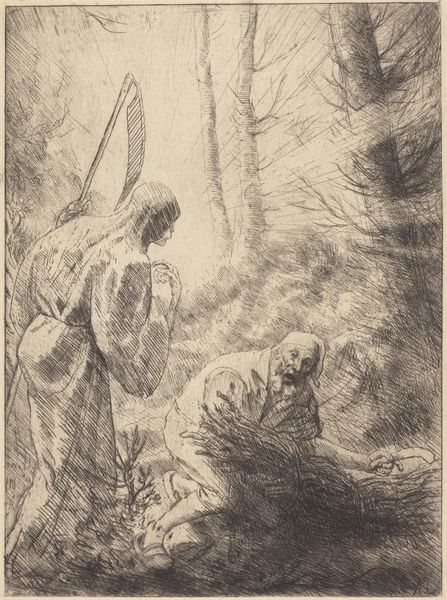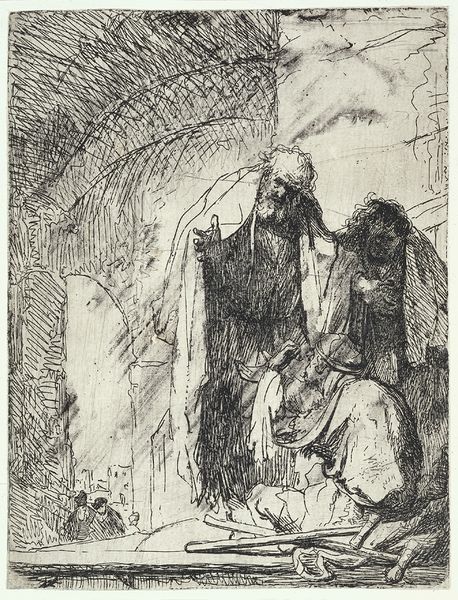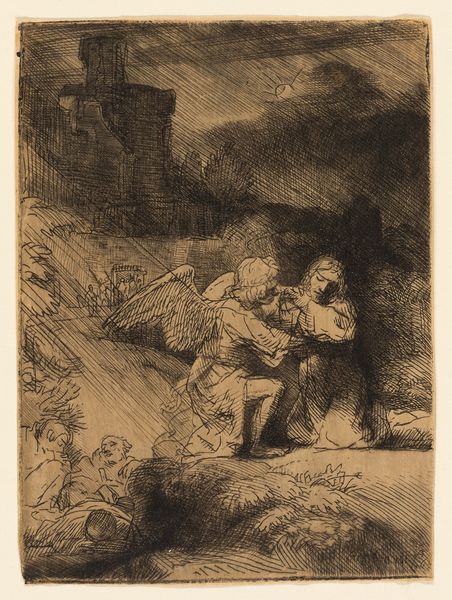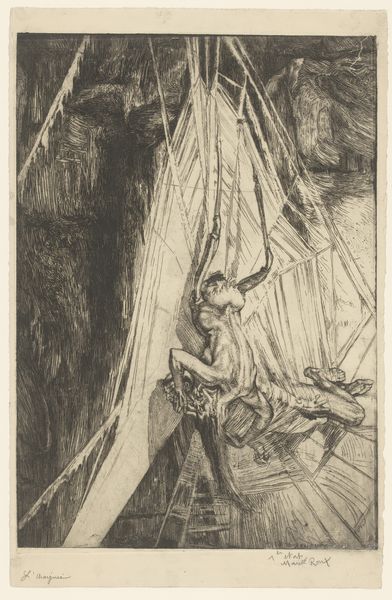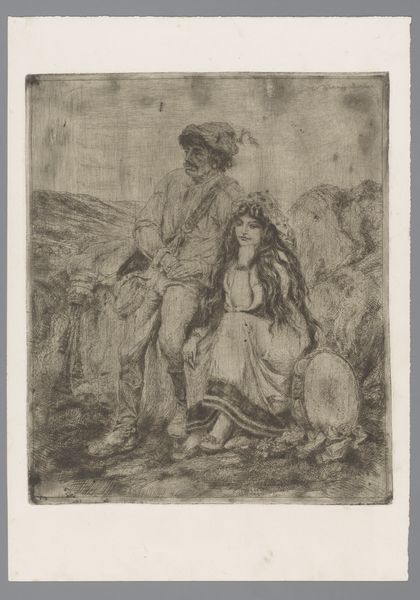
drawing, paper, charcoal
#
portrait
#
drawing
#
16_19th-century
#
narrative-art
#
charcoal drawing
#
figuration
#
paper
#
german
#
romanticism
#
portrait drawing
#
charcoal
#
history-painting
Copyright: Public Domain
Curator: Here we have Victor Müller's "Judith and Holofernes," a charcoal drawing rendered on paper. It resides here at the Städel Museum. Editor: Brrr, even looking at it sends a chill down my spine. It's all smoky shadows and stark contrast. Not exactly the sort of image you'd want hanging above your bed, is it? Curator: Indeed. The subject matter alone hints at drama and turmoil. Judith, a biblical heroine, bravely infiltrating the tent of Holofernes, an Assyrian general, to assassinate him and save her people. The drawing really plays with the concepts of feminine power against masculine might, and, of course, self-preservation versus tyrannical oppression. Editor: It’s interesting, isn’t it? The way Müller uses charcoal to almost veil the scene. Judith looks less like a triumphant hero and more like someone weighed down by what she’s done, while the exposed corpse seems vulnerable. The whole thing lacks a kind of triumphalist glow that might surround it; there are a lot of unresolved shadows. Curator: Precisely. The use of charcoal contributes to a sense of immediacy and rawness. It echoes Romanticism’s preference for emotional expression over classical idealism. There's also a certain psychological weight in her downward gaze; is it contemplation, or something more like regret? The soft paper provides a canvas of subdued emotion; the lines carry echoes of history and its timeless cycles of conflict and redemption. Editor: That’s what’s so fascinating about it—that ambiguity. It makes you question the easy heroism, doesn't it? It would have been simple enough to give the viewer some gore. It has been done repeatedly in art, of course. But it suggests to me something deeper and harder about choice. There is that almost spectral doubling right beside Judith's hood there, echoing the question in her heart. The artist, however imperfectly, renders a kind of struggle with good and evil that must follow any consequential decision. Curator: It provides such an affecting contrast. And what a layered reminder that visual art captures those in-between spaces, as well, reminding us of our shared struggles with power and conscience. Editor: Yes, a quiet corner where art asks uncomfortable questions and gets us to ask them too.
Comments
No comments
Be the first to comment and join the conversation on the ultimate creative platform.

